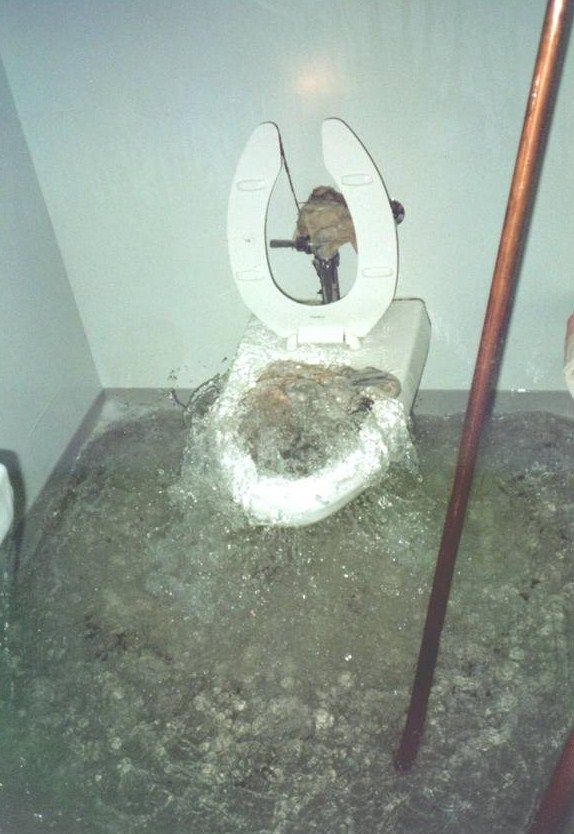In the lexicon of property management, there’s a term for a contingency that’s so direct, unambiguous, and notorious it creates automatic horror. And it happens all the time when it’s least expected. If the term “sewage backup” (Gross-out!) comes to mind, you guessed right. No property manager wants to hear it uttered in the same breath with anything even remotely associated with his or her buildings. But as the bumper sticker (somewhat less elegantly) puts it – “Stuff Happens!”
The reasons for sewerage backups vary from bad plumbing design to sewage system overload and everything in between. Whatever the reason, as a property owner or manager you’ll need to clean things up fast. Quick action and technically appropriate remediation are critical for some obvious and some not so obvious reasons.
Under the “Obvious” column heading we can put things like disposal of disease-causing matter and odor-carrying water. Restoring acceptable Indoor Air Quality levels demands we act in a thoroughgoing way to abate the problem. We also know we need to act expeditiously in order to minimize the economic losses associated with loss of habitation and disruption of business.
Under the “Less Than Obvious” column heading, we need to highlight a few issues some owners and managers tend to sweep under the rug (a particularly bad idea in this instance): the interior surfaces of structural elements, such as walls, need to be dried and disinfected as much as exterior surfaces. To not do so is to invite potentially deadly fungal growth and a lingering odor that can cause devastating long term health problems, diminish property values and invite litigation
And about those rugs: contrary to what you may have heard, they need to be disposed of. No technology currently exists that can sanitize a rug that has been immersed in wastewater. Also, sheetrock must be removed up to and slightly above the level of contamination.
As Water Damage Restoration Specialists we face such issues daily, particularly in periods of extreme precipitation. Far and away the best advice we can give owners and managers in such instances is to allow us to do the job right, to not stint on time, materials, and manpower; and to undertake a thoroughgoing drying and disinfecting regime which removes every last vestige of sewage waste, water, and humidity from a flooded site.
The good news (Remember we promised some at the outset of this article?) is that recent advances in restorative drying technology have led to dramatic new ways to abate water within structural components. Also, proper dehumidification and disinfecting of surface areas can now be more quickly accomplished using such advanced equipment as extractors, blowers, and dehumidifiers. By constantly monitoring the effect of such devices with non-invasive humidity probes we are able to make informed judgments as to what extent water and humidity have been removed.


